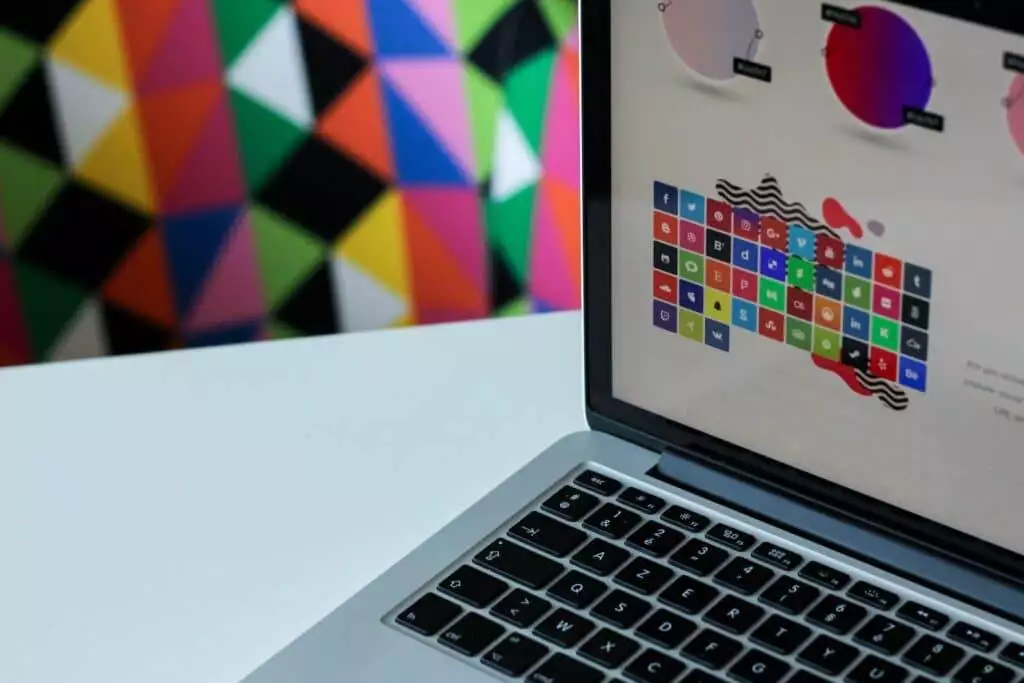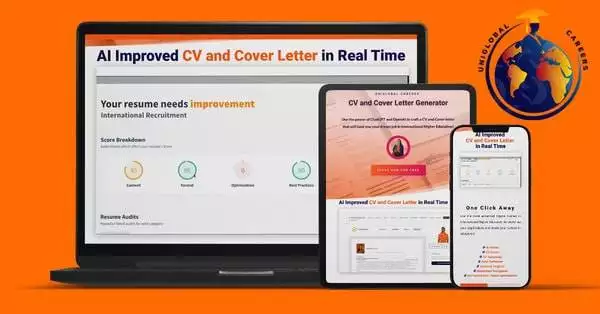Are you a graphic designer who is looking to make a significant career change? Have you considered a job in international education, but you’re not sure how to get started? The good news is that it’s not impossible to switch fields, as long as you have a plan in place. Here are some tips on how to make a successful transition from graphic design to a job in international education.
Understanding the Shift from Graphic Design to International Education
Before you jump into the international education field, it’s important to understand the differences between graphic design and education. While both fields require creativity and problem-solving skills, they serve different purposes and have different goals.
Graphic design is a visual art form that focuses on creating visual communication through typography, imagery, and layout. Graphic designers work on projects such as designing logos, creating marketing materials, and developing websites. They use their creativity to communicate a message visually and effectively.

On the other hand, international education is about cross-cultural exchange and promoting global understanding through education. It involves teaching students about different cultures, languages, and ways of life. International educators work to create a more inclusive and understanding world, where people from different backgrounds can come together and learn from each other.
Key Differences Between the Two Fields
While graphic design and international education share some similarities, they have several key differences. For example, graphic design is a more solitary profession, where designers often work alone or in small teams. In contrast, international education involves working with students, teachers, and administrators from all over the world.
Another difference is that graphic design is more focused on aesthetics and visual appeal, while international education is more about imparting knowledge and fostering understanding. Graphic designers work to create designs that look good and catch the eye, while international educators work to create educational experiences that are meaningful and impactful.
Identifying Transferable Skills and Knowledge
Despite the differences, there are several transferable skills and knowledge that graphic designers can bring to the international education field. For example, graphic designers are often highly creative and have strong problem-solving skills. They are used to working on tight deadlines and managing multiple projects at once.
Additionally, graphic designers have experience in visual communication, which can be beneficial in the international education field. They can use their design skills to create visually appealing educational materials, such as posters, infographics, and presentations.
Reasons for Making the Transition
There are many reasons why someone might want to transition from graphic design to international education. Perhaps you want a change of pace, or you’re interested in working toward a more significant social impact. Alternatively, you may have developed a passion for education after volunteering or working with students.
Whatever your reasons for making the transition, it’s important to understand the unique challenges and rewards of working in the international education field. It can be a highly fulfilling and rewarding career, but it also requires a lot of hard work and dedication.
Overall, if you’re considering a move from graphic design to international education, it’s important to do your research and understand the differences between the two fields. With the right mindset and skillset, however, it’s possible to make a successful transition and find a fulfilling career in international education.
Assessing Your Skills and Interests
Before you make the switch to a career in international education, it’s important to take some time to assess your skills and interests. This will help you determine whether a job in international education is the right fit for you and how you can make the most of your existing skills in this field.
International education is a diverse field that encompasses a wide range of roles, from teaching and curriculum design to program management and marketing. To succeed in this field, you’ll need to have a passion for education, a willingness to learn about different cultures, and a set of skills that can be applied to a variety of tasks.
Evaluating Your Graphic Design Expertise
If you’ve been working in graphic design for a while, you already have a good idea of your strengths and weaknesses in the field. However, it’s essential to consider how these skills can be applied to the international education field. For example, can you use your design skills to create engaging educational materials or marketing campaigns for international education initiatives?

Moreover, if you are not very experienced in graphic design, you can always take a course to improve your skills. There are many online courses that can help you learn the basics and advanced techniques of graphic design.
Exploring Your Passion for International Education
Do you have a passion for teaching, traveling, and learning about other cultures? If so, a job in international education may be a perfect fit for you. Take some time to explore your interests and see how they align with the international education field. You can attend workshops and seminars to learn more about the different opportunities available in this field, and network with professionals who are already working in this area.
Additionally, volunteering in international education programs can help you gain valuable experience and insight into the field. You can also join online communities of international educators to connect with like-minded individuals and stay up-to-date on the latest trends and developments.
Identifying Your Strengths and Weaknesses
It’s crucial to identify your strengths and weaknesses when considering a career change. Be honest with yourself when evaluating your skillset. What are you good at? What areas could you improve? This will help you determine what steps you need to take to make a successful transition.
Moreover, it’s important to keep in mind that international education is a constantly evolving field, so it’s essential to stay up-to-date with the latest trends and developments. You can attend conferences, read industry publications, and participate in online discussions to stay informed and expand your knowledge.
In conclusion, assessing your skills and interests is a crucial step in determining whether a career in international education is right for you. By evaluating your existing skillset, exploring your passion for education and culture, and identifying your strengths and weaknesses, you can make an informed decision about your future in this exciting and rewarding field.
Building Your Network in International Education
Networking is a crucial element in any job search, including transitioning from graphic design to international education. Building a strong network can help you learn more about the industry, gain access to job opportunities, and connect with like-minded professionals. Here are some ways to build your network in the international education field:
Attending Industry Events and Conferences

Attending industry events and conferences is an excellent way to meet professionals in the international education field. These events provide opportunities to network with industry leaders, learn about industry trends and developments, and gain insights into potential job opportunities. Consider attending events such as the NAFSA Annual Conference & Expo, the Association of International Education Administrators Annual Conference, or the Global Internship Conference.
When attending events and conferences, be sure to come prepared with business cards and a clear idea of what you hope to gain from the experience. Take advantage of networking opportunities by introducing yourself to new people, exchanging contact information, and following up with individuals after the event.
Connecting with Professionals on Social Media
Social media platforms such as LinkedIn, Twitter, and Facebook can be powerful tools for building your network in the international education field. Use these platforms to connect with professionals in your desired industry, join relevant groups and discussions, and share your own insights and experiences.

When connecting with professionals on social media, be sure to personalize your messages and engage in meaningful conversations. Avoid sending generic messages or spamming individuals with job inquiries. Instead, focus on building genuine relationships and offering value to others in your network.
Joining Professional Associations and Organizations
Joining a professional association or organization is a great way to meet like-minded individuals and build your network in the international education field. These organizations provide opportunities to attend events, participate in professional development programs, and connect with other professionals in your desired industry.
Consider joining organizations such as the International Association of Universities, World Education Services, or NAFSA: Association of International Educators. These organizations offer a range of benefits, including access to job boards, publications, and networking events.
When joining a professional association or organization, be sure to take advantage of all the resources available to you. Attend events, participate in online discussions, and connect with other members to build strong relationships and gain valuable insights into the industry.
Building a strong network in the international education field takes time and effort, but the benefits are well worth it. By attending industry events and conferences, connecting with professionals on social media, and joining professional associations and organizations, you can expand your network, gain valuable insights, and increase your chances of success in the field.
Gaining Relevant Experience and Education
Transitioning from graphic design to international education can be a daunting task, but there are several ways to gain the relevant experience and education needed to succeed in the field. Here are some tips that can help:
Volunteering or Interning in International Education
Volunteering or interning in international education is an excellent way to gain hands-on experience and learn about the field. There are many organizations that offer these opportunities, such as The Peace Corps, Teach for America, and UNICEF. These organizations work with communities in need around the world, providing education and support to children and families. By volunteering or interning with these organizations, you will gain valuable experience working with diverse populations, developing educational programs, and managing resources.
In addition to these organizations, there are also local opportunities to volunteer or intern in international education. Many schools and universities offer study abroad programs or international student services that need volunteers or interns. These opportunities can be a great way to gain experience working with international students and learning about different cultures.
Pursuing Further Education or Certifications
If you want to gain more knowledge in the international education field, consider pursuing further education or certifications. There are many programs available that can help you gain the skills and knowledge needed to succeed in the field.
One option is to pursue a Master’s Degree in International Education. This degree program will provide you with a comprehensive understanding of the field, including topics such as cross-cultural communication, international development, and education policy. Another option is to pursue a Certificate in International Education Management. This program will focus on the practical skills needed to manage educational programs in international settings, such as budgeting, fundraising, and program evaluation.
Building a Portfolio of International Education Projects
Finally, consider building a portfolio of international education projects. This will demonstrate your skills and experience in the field and make you a more attractive candidate for potential employers. Your portfolio can include examples of educational programs you have developed, research you have conducted, or volunteer work you have done in international education.
You can also use your portfolio to showcase your skills in areas such as cross-cultural communication, project management, and program evaluation. Be sure to highlight any successes or achievements you have had in your work, such as increased student enrollment or improved academic performance.
By following these tips, you can gain the experience and education needed to succeed in the international education field. Whether you choose to volunteer, pursue further education, or build a portfolio of projects, remember to stay focused and committed to your goals. With hard work and dedication, you can make a successful transition from graphic design to international education.
Conclusion
In conclusion, transitioning from graphic design to international education is possible with a plan in place. Take the time to assess your skills and interests, build your network in the field, gain relevant experience and education, and build a portfolio of international education projects. With hard work and dedication, you can make a successful transition and start a rewarding career in international education.


